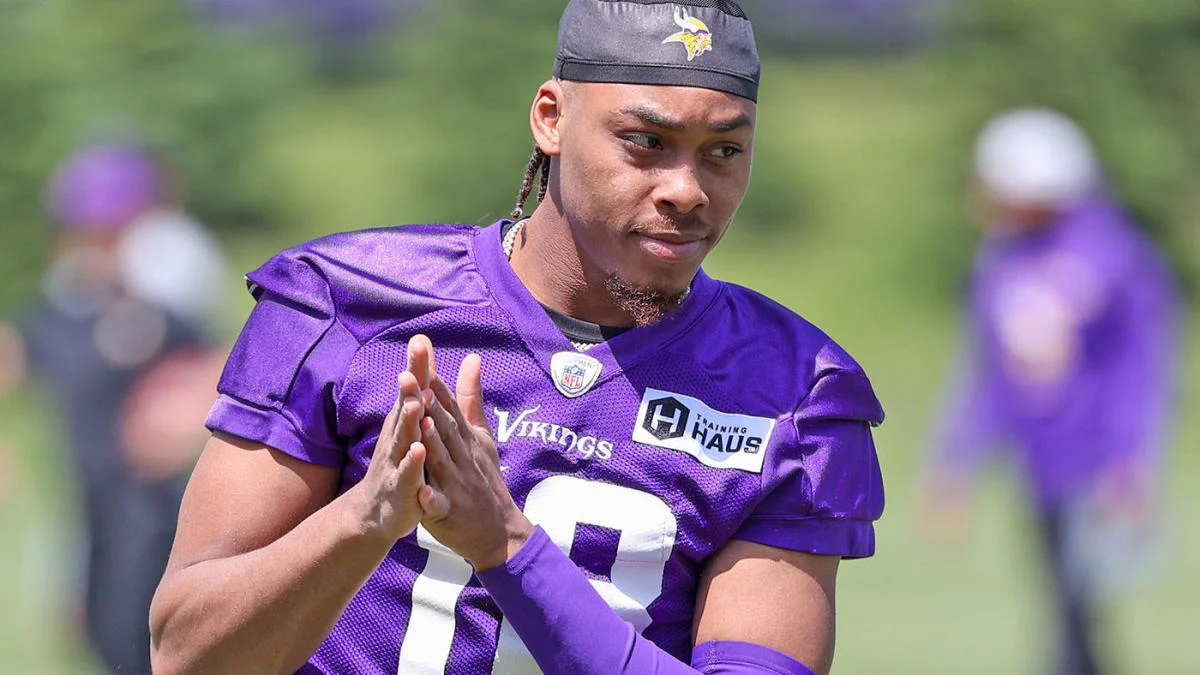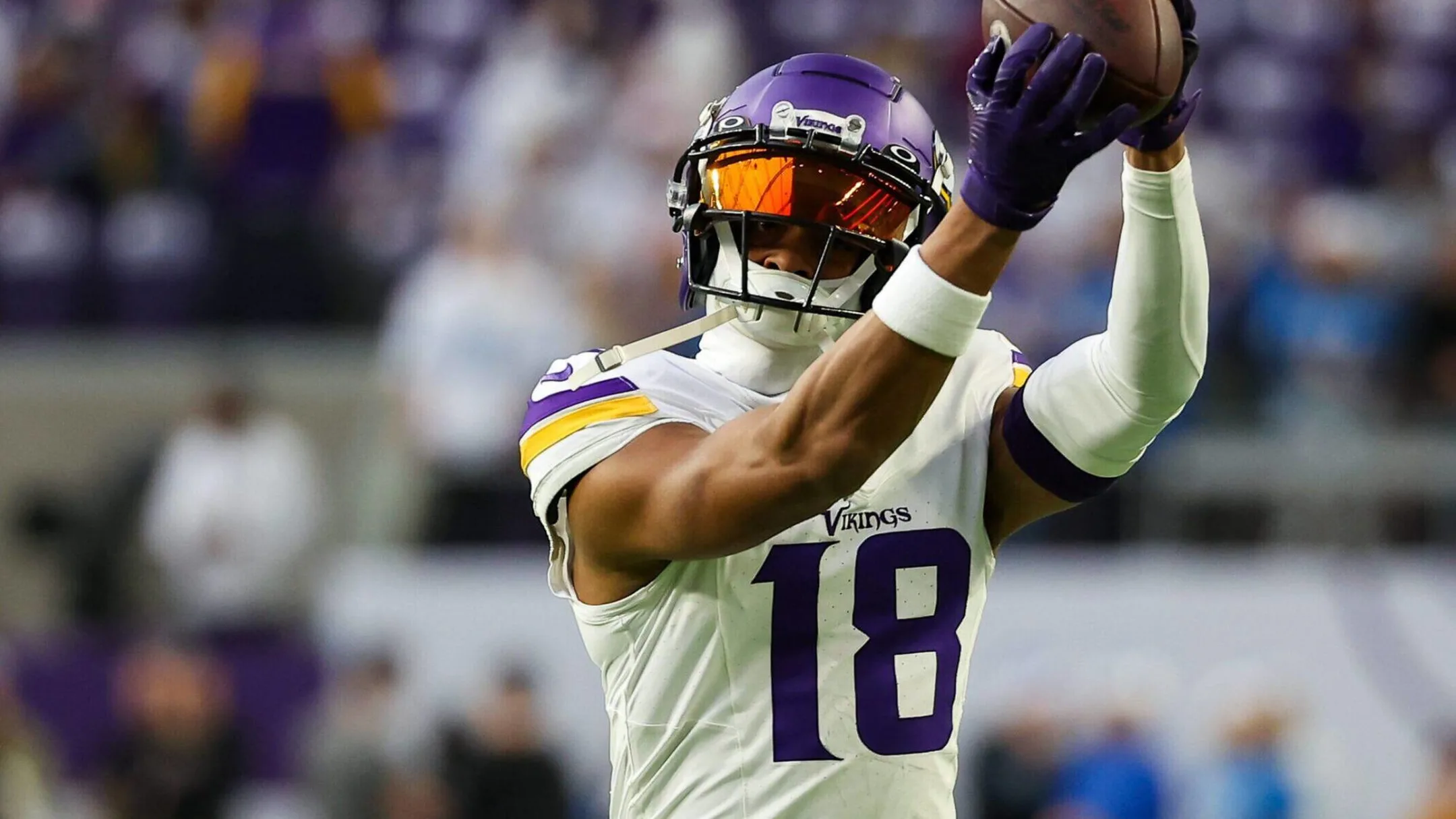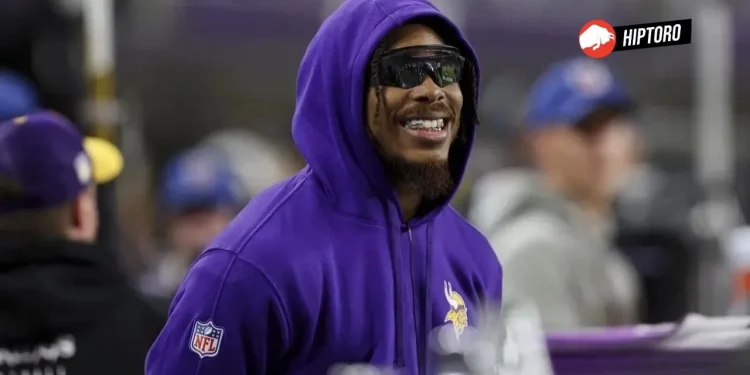This year, Justin Jefferson’s absence from the Minnesota Vikings’ offseason program headlines the saga, shedding light on the dynamics of player contracts and team strategies.
Jefferson’s no-show is not merely a repeat of last year’s script; this offseason brings new elements into play, creating a ripple of anticipation and speculation among fans and analysts alike.

Justin Jefferson’s Tug-of-War Over Contract Extensions
Justin Jefferson’s absence from the first day of the Vikings’ offseason program did not come as a surprise to those who followed his actions last year. However, this year, the circumstances are a bit different. Kevin O’Connell, the Vikings’ head coach, has expressed optimism about reaching an agreement.
“I’ve had a lot of great dialogue with Justin throughout even the early part of this offseason and leading up,” O’Connell shared with KTSP in Minnesota. “My hope is we can get him around the team. Such a special player, but it goes beyond that this time of year because of just the energy and flat-out way he goes to work.”
Posting a Justin Jefferson highlight everyday until he gets extended @JJettas2
Day Forty-Four: pic.twitter.com/YHizKgKCXd
— ≋𝘿≋ (@VikingsDynasty) April 18, 2024
Despite battling a hamstring injury last season, Jefferson’s performance has positioned him on track for a significant contract extension.
His record, compared to NFC peers like CeeDee Lamb and Amon-Ra St. Brown, supports his aspirations to become the NFL’s highest-paid receiver, a throne currently held by Tyreek Hill with an annual value of $30 million.
“Understandably, the 2020 first-round pick will want to be the NFL’s highest-paid receiver,” echoes the sentiment across the league.
Strategic Absence Amidst New Team Dynamics
The storyline this offseason is complicated by the Vikings’ quarterback transition. After six seasons with Kirk Cousins at the helm, Sam Darnold steps in, likely to be joined by a first-round pick in the post-draft workouts.
This change emphasizes the importance of Jefferson integrating with the new quarterbacks—a move that would benefit all parties involved.

Jefferson’s strategic absence could be seen as a negotiating tactic. Since no fines can be imposed until the mandatory minicamp, Jefferson’s leverage remains strong.
This maneuver reflects a broader playbook used by players seeking to secure substantial contracts, highlighting the intricate dance between player value and team financial strategies.
Minnesota Vikings’ Historical Context and Future Prospects
The Vikings’ history with wide receiver contracts—such as those with Randy Moss and Stefon Diggs, who were traded after receiving extensions—may also play into the ongoing discussions.
These precedents, combined with the team’s financial outlook post-2025, when Cousins’ dead money is off the books, add layers to the negotiation table. The team’s capability to offer Jefferson a competitive deal looks promising, yet the comparison with Hill’s contract looms large.
As the Vikings navigate this crucial phase, the outcome of these talks could set precedents for how star players are valued and retained.
With the NFL landscape continually evolving, the resolution of Justin Jefferson’s contract saga will not only affect the Vikings’ future but also reflect broader trends in the league’s approach to star athletes and fiscal management.
In essence, Justin Jefferson’s offseason maneuvers, coupled with the Vikings’ strategic financial planning, are crafting a narrative filled with negotiation, strategy, and the high stakes of NFL economics.
As this drama unfolds, all eyes will remain on how one of the NFL’s brightest stars aligns his future with the ambitions of a team eager to capitalize on his extraordinary talents.

Source: yardbarker









